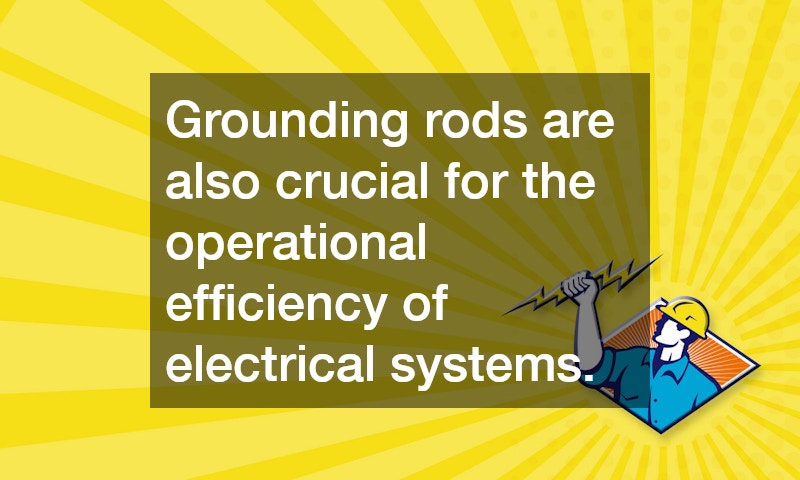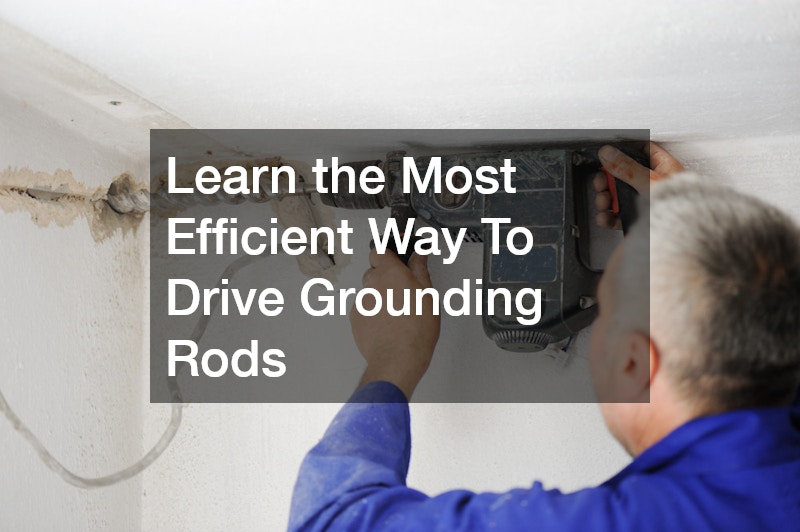Grounding rods, also referred to as ground rods or earthing rods, play a crucial role in electrical systems. They provide a physical connection between the electrical system and the earth, which helps in dispersing electricity during a fault. Typically made from conductive materials like copper or steel, grounding rods ensure that excess electricity has a safe path to the ground, ultimately protecting electrical appliances and preventing electrical fires or shocks.
The importance of grounding rods cannot be understated, particularly in areas with frequent electrical storms. By providing a low-resistance path to the ground, these rods help to mitigate the risk of surges and spikes in electrical systems. In households and commercial setups alike, properly installed grounding rods are part of the essential safety infrastructure. Consequently, understanding how to efficiently drive these rods into the ground is vital for both safety and functionality.
Beyond safety, grounding rods are also crucial for the operational efficiency of electrical systems. They help maintain the stability of voltage levels, ensuring that electrical circuits operate correctly. In many regions, building codes and electrical regulations mandate the use of grounding rods, making their installation a legal necessity. Therefore, learning the most efficient manner to install them can save time and effort, ensuring compliance with these regulations.
Preparing the Site for Grounding Rod Installation
Before driving a grounding rod, it is essential to prepare the installation site adequately. Begin by identifying a suitable location, generally near the main electrical panel or service entrance. The site should ideally have soil that is moist enough, as dry soil can increase resistance and reduce the efficacy of the grounding rod. In cases where the soil is dry or rocky, adding moisture can assist in the ease of installation and improve the grounding efficiency.
It is also advisable to ensure that the installation site is free from any underground utilities or obstacles. Before installation, contacting your local utility companies to mark underground cables and pipes can prevent accidental damage. This step is not just a precautionary measure; it is often a legal requirement to avoid service interruptions and safety hazards. Additionally, ensuring that the ground rod’s length aligns with local codes and regulations is critical for compliance.
Once a suitable site is identified, clear the area of any debris or materials that may hinder installation. This makes the process smoother and minimizes the risk of errors or damage. Having the necessary tools ready, such as a sledgehammer or a rod driver, is vital for efficiency. Preparing effectively translates into a streamlined installation process, ensuring that the grounding rod not only meets regulatory standards but also provides optimal performance.
Tools and Techniques for Driving Grounding Rods
The tools used for driving grounding rods vary depending on the type of soil and the equipment available. A manual sledgehammer is often sufficient for penetrating softer soils. However, for tougher conditions, employing a power tool like a jackhammer with a grounding rod adapter can significantly ease the process. Choosing the right tool is crucial as it influences the time and effort required to drive the rod to the appropriate depth.
Another efficient technique involves utilizing a water drilling method, especially in sandy or clay-heavy soils. This involves pouring water over the installation area to loosen the soil, reducing resistance when driving the rod. This method can be particularly advantageous where soil conditions make manual driving tools ineffective. It improves the contact between the rod and the soil, enhancing the grounding system’s effectiveness.
Whatever method or tool you choose, always ensure that personal protective equipment (PPE) is worn to prevent injury. Eye protection, gloves, and appropriate footwear are non-negotiable when driving grounding rods. Safety considerations do not just protect the person installing the rod, but also ensure the structural integrity of the rod installation. The correct technique, combined with appropriate tools and safety measures, makes the process both efficient and secure.
Common Challenges and Solutions
Driving grounding rods is not without its challenges, but understanding potential obstacles can help in devising effective solutions. One common issue is encountering rocky or compact soil, which may resist penetration of the grounding rod. In such instances, using a pilot hole or specialized earth augers can aid in breaking up the soil structure, providing a clearer path for the rod.
Another challenge arises when the soil is extremely dry, increasing the rod’s electrical resistance and reducing its grounding capability. Increasing soil moisture, either by natural means or through artificial watering, can alleviate this issue. Additionally, opting for a grounding rod with a larger diameter can improve contact with the soil, enhancing conductivity even in less-than-ideal conditions.
Missing the required depth is another challenge, often due to hardscaping or natural obstacles like tree roots. Cutting the rod to an appropriate length or relocating the installation site are potential solutions. In cases where relocation is not feasible, using a coupler to extend the grounding rod to its required depth can be a practical resolution. Addressing these challenges proactively ensures that the grounding system is robust and capable of safely conducting electrical faults into the ground.
Maintenance and Testing of Grounding Rods
Once installed, maintaining and periodically testing grounding rods is essential for ongoing safety and performance. Electrical systems are dynamic, and environmental factors such as weather changes or settling earth can affect grounding efficiency over time. Regular testing with a ground resistance meter will help ensure that the grounding rod is effectively performing its safety functions.
Testing typically involves measuring the resistance level, with values ideally falling below 25 ohms as a standard recommendation. If resistance levels exceed this threshold, maintenance such as tightening connections or adding additional grounding rods may be necessary. Regular inspection of the visible parts of the grounding system, such as clamps and connectors, should also be part of a routine check to spot signs of wear or corrosion.
Beyond measurable tests, visual inspections can reveal issues like green copper staining, indicating oxidation, which may compromise the rod’s efficacy. The longevity and effectiveness of grounding rods depend significantly on proper maintenance practices. Regular upkeep ensures optimal performance, supporting both the safety and reliability of the entire electrical system.

